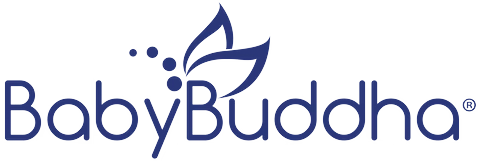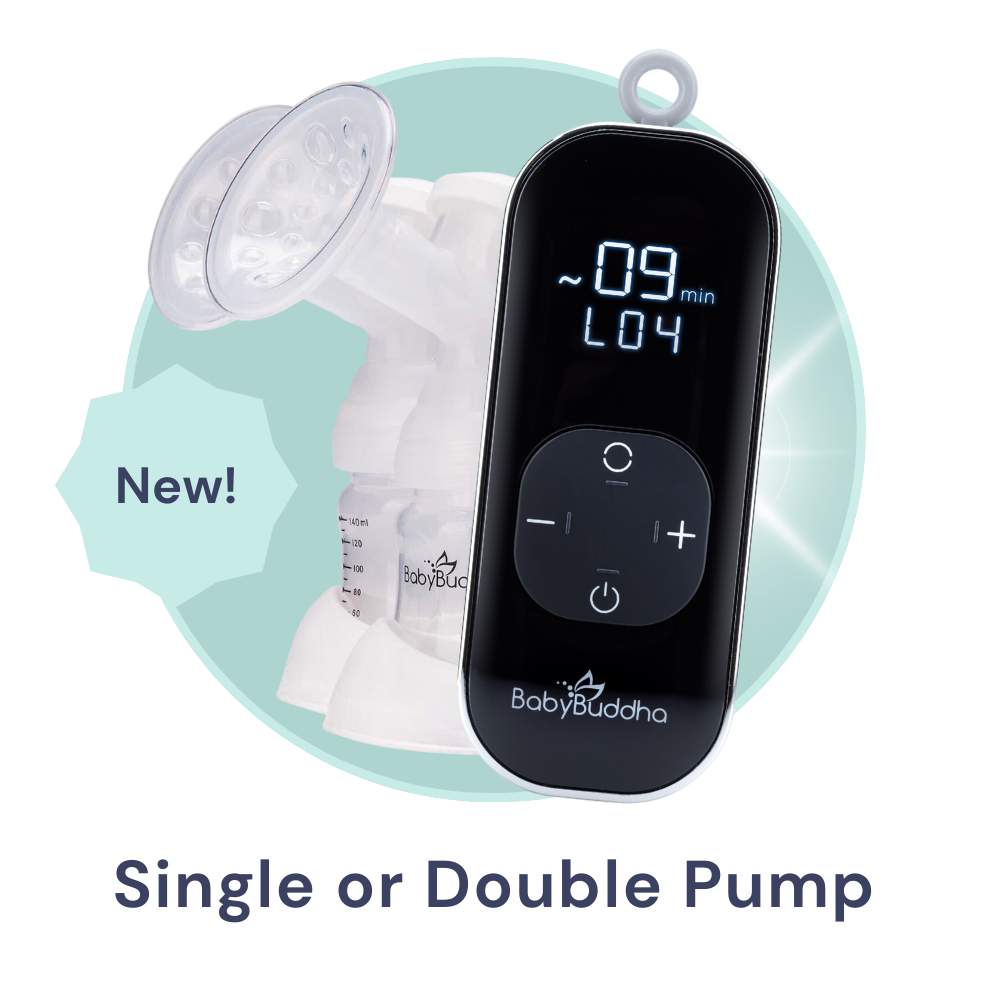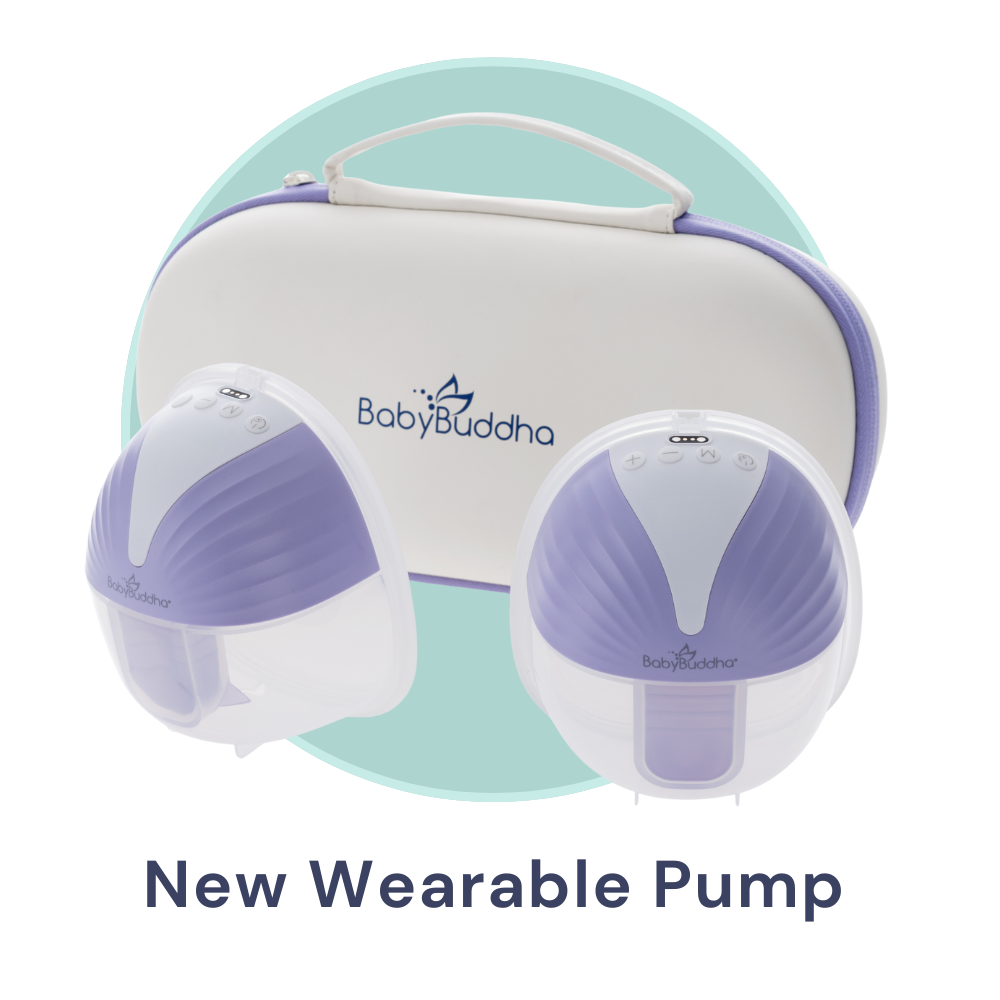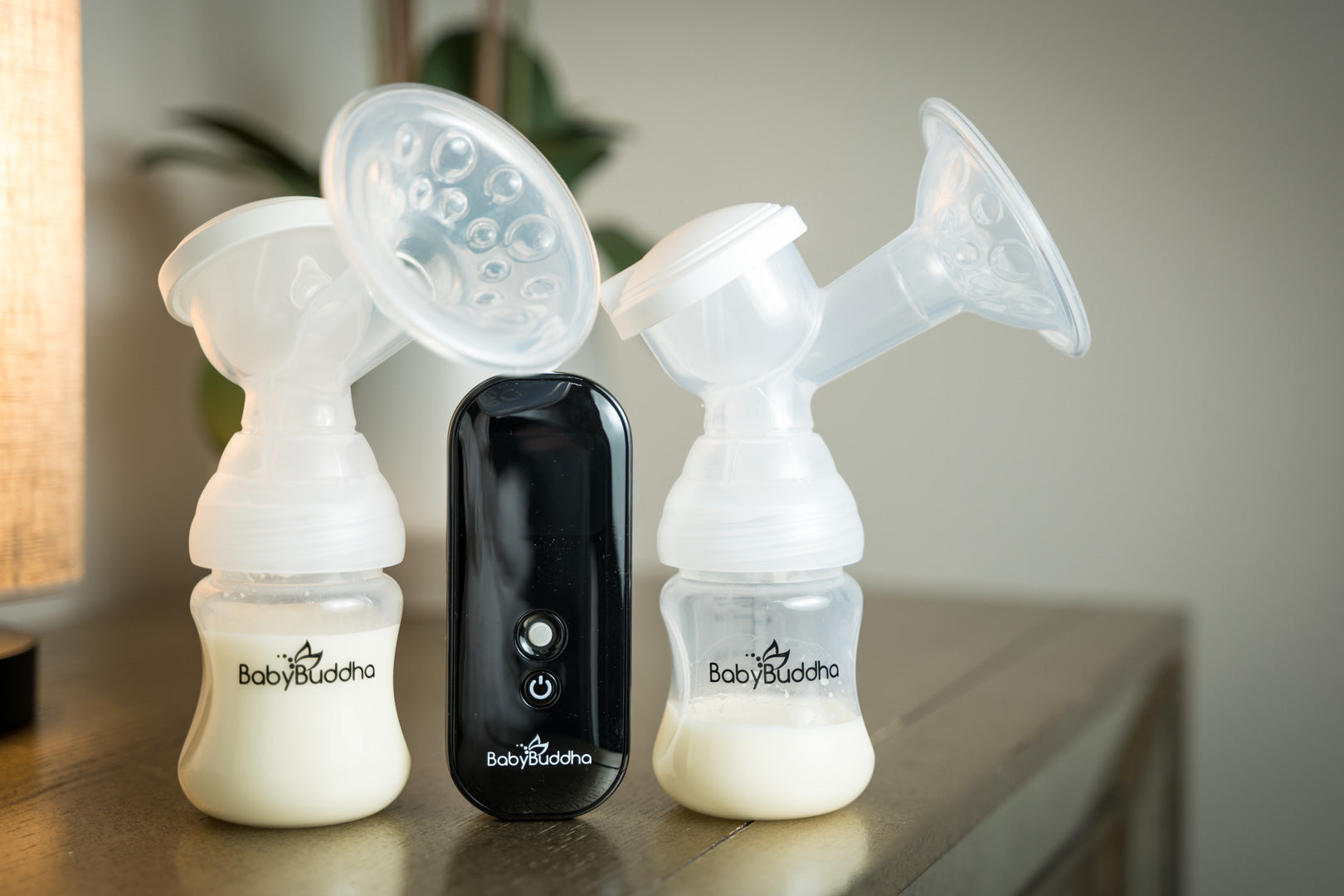Medically Reviewed By | Dr. Hope Lima, PhD, RDN, LRD, IBCLC
Elisabeth Anderson-Sierra, BabyBuddha’s Director of Lactation Services, shares her top tips to support the increase of your breast milk supply.
Whether you are a breastfeeding mom, a pumping mom, or both, you have likely had the thought, “Am I making enough milk?” Breast milk production is a common concern of moms in the earliest days of their baby’s life.
While many factors can cause a sudden (and usually temporary) decrease in milk production, not all of these are permanent. However, it’s important to note that some women do experience low milk supply. Just like hormones boost breast milk production, they can also interfere with it. Hormonal birth control, thyroid conditions, and PCOS are three possible disruptors. Breast surgeries, particularly reductions, can interrupt breast milk production.
While conditions can make breast milk production difficult, you’re likely making the milk your baby needs. Remember, your baby’s tummy is very small when they are born, about the size of a marble. Your body should produce more as your baby ages. “Before deciding if increasing your supply is appropriate, consider reviewing the ways to tell if your baby is getting enough milk,” notes Lactation Expert Dr. Hope Lima, PhD, RD, IBCLC.
While conditions can make breast milk production difficult, you’re likely making the make your baby needs. Remember, your baby’s tummy is very small when they are born, about the size of a marble. Your body should produce more as your baby ages. That being said, there are ways to tell if your baby is getting enough milk.
Those things being considered, there are plenty of reasons that you may want to increase your milk supply. Whether that is because you are worried your baby isn’t eating enough breast milk, you want to build a stash in your fridge or freezer for when you are away, or maybe you want to be a breast milk donor.
Whatever your reason, here is our complete guide for increasing your breast milk supply.
Breastfeed on Demand
Breastfeeding on demand is one of the most popular ways to increase milk supply. In general, moms will have about eight to 12 nursing sessions a day, depending on their babies’ sleep routine.
It is very important to learn what your baby’s hunger cues are so that you can recognize when they are telling you that they are hungry. Since they can’t yet speak, they tell us through body movements and sounds such as turning towards the breast or smacking their lips. When you see your baby show these signs, try to offer them a breast as soon as possible.
Another thing you can do while breastfeeding on demand is to encourage your baby to feed from both breasts during a session. This will help signal your body that you have a hungry enough baby and that it needs to up the milk production to keep up.
Pump After Nursing
Another way to signal to your body that it needs to create more milk is to use a breast pump after you nurse to fully remove any milk that your baby may have left. You can do this using a battery-powered pump, or if you prefer, you can use a manual pump. Empty breasts tell the body to refill them!
Power Pumping

Power pumping is an excellent and effective way to get your body to increase your milk supply. Begin by pumping for 20 minutes, then take a ten-minute break before pumping for 10 minutes. Follow that with another ten-minute break and one more ten-minute pumping session.
You can do this a few times a day if necessary to help your body know that milk is being removed and to create the amount of milk to replace it.
When it comes to power-pumping, an electric, wearable, and battery-powered breast pump like the BabyBuddha® Single or Double Portable Breast Pump can make the process faster and easier. The 15 different modes allow you to choose which settings work best for your power-pumping routine. It’s quiet and powerful, and wearable so that you can pump while getting other things done.
Power pumping is possible with a multi-level manual pump. The BabyBuddha Manual Breast Milk has two modes, with the second level encouraging more milk production. The hand pump allows you to control the speed, rhythm, and suction strength.
Skin-to-Skin Contact
Skin-to-skin is one of the easiest (and least expensive) ways to increase your milk supply. When you put your baby on your chest with their skin touching yours, your body produces oxytocin, one of the most important hormones for a healthy milk supply. This tells your body that your baby is close and needs to be nourished.
Skin-to-skin is also a great way to bond with your baby, which is an excellent benefit of breastfeeding. Most moms do their first skin-to-skin as soon as they are able after birth. Usually right away for moms who have birthed vaginally or after stitches if you have a C-section.
Check Your Baby’s Latch
A poor latch can be detrimental to a breastfed baby’s milk intake. Incorrect latching can lead to low consumption of breast milk, gassiness, and dehydration. It’s a very important thing to check if you feel that your milk supply is low. It is a common problem.
Review how to get a good latch, and remember, it’s okay to readjust if it’s not right the first time. Unlatch your little one and try again. Don’t be too hard on yourself if it takes a few tries: You and your baby are both learning from each other!
If your baby is still not latching properly, it is worth speaking with a lactation consultant to assess if there is a deeper issue, such as an undiagnosed tongue tie.
When it comes to latching, the way the baby’s mouth approaches a nipple and a bottle is a tad different. In some — not all — cases, this can lead to nipple confusion. Babies who are bottle-feeding might need some assistance. Nipple confusion is relatively easy to correct, so parents who feed their babies a mix of breast milk and infant formula have little cause for concern.
Massage Your Breasts
Massaging your breasts is another easy way to help increase your milk supply. This helps your milk flow more freely. When your milk is flowing more freely, your baby will have an easier time emptying your breasts. Massaging your breasts also triggers your let-down reflex.
There are two main ways to accomplish this. You can either massage your breasts with your hands or purchase a lactation massager. Both are effective, so feel free to use them in combination with each other as well. Lactation massagers are also very effective in freeing clogged milk ducts which can cause you to release less milk when nursing.
Monitor Your Diet and Hydration
If you feel the need to increase your milk supply, it is necessary to understand how much your diet and nutrition play into that. Breastfeeding and pumping women need to eat an additional 330 to 400 calories a day to support an adequate milk supply.
Focus on whole and nutritious foods. Eat a well-rounded diet of protein, fat, carbs, fruits, and vegetables to support your body during this time. It takes energy to create breast milk! If you are not properly nourishing yourself, your body will not have the energy to keep up a large milk supply. Some foods have been linked to increased milk production, like oatmeal.
In addition to nutrition, it’s critical to drink plenty of water every day. When dehydrated, your body will retain water which is a huge factor in breast milk production. It is recommended that women who are nursing or pumping drink about 16 cups of water per day.
A note on supplements: Some recommend mothers take supplements for supply, including fenugreek and many different herb blends. However, it’s essential to note that while the FDA notes it’s generally safe, it’s not regulated by the agency. It’s generally not recommended for pregnant women, and research on the ability of this herb is not conclusive.
For many, fenugreek can have the opposite desired effect. In terms of all herbal galactagogues, always check with your healthcare team. Allow your naturally occurring hormones to take the reins on your milk supply after birth, especially within the first 12 weeks or till after supply regulates.
You Are Doing a Great Job

In general, as long as your baby has consistent wet and dirty diapers, it is very likely that they are getting enough to eat. You are doing a great job — in case no one has told you that today.
If you are experiencing a lower-than-usual milk supply and have concerns, we recommend talking with your healthcare provider or a board-certified lactation consultant about your concerns.
We are here to help! Reach out to our support agents today for any questions that you have, and check out our extensive resource collection for more information geared toward moms everywhere.
Sources:
How Much Milk Your Baby Needs | USDA
Give ‘Em Some Skin | Stanford Children’s Health
Understanding Breastfeeding Benefits | Health Resources & Services Administration
Foods that help lactation: Diet tips and recipes | Medical News Today
Introducing Bottles and Pacifiers to a Breastfed Baby | Contemporary OB/GYN®








